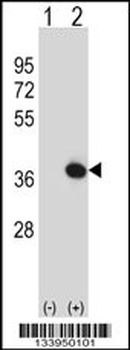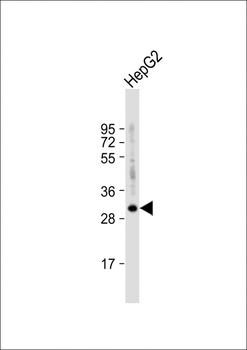You have no items in your shopping cart.
TOLLIP Antibody (C-term)
Description
Images & Validation
−| Tested Applications | IHC-P, WB |
|---|---|
| Dilution range | IHC-P - 1:100-500, WB - 1:1000 |
| Reactivity | Human |
Key Properties
−| Antibody Type | Primary Antibody |
|---|---|
| Host | Rabbit |
| Clonality | Polyclonal |
| Isotype | Rabbit IgG |
| Molecular Weight | 30282 Da |
| Conjugation | Unconjugated |
Storage & Handling
−| Storage | Maintain refrigerated at 2-8°C for up to 2 weeks. For long term storage store at -20°C in small aliquots to prevent freeze-thaw cycles |
|---|---|
| Form/Appearance | Purified polyclonal antibody supplied in PBS with 0.09% (W/V) sodium azide. This antibody is prepared by Saturated Ammonium Sulfate (SAS) precipitation followed by dialysis against PBS. |
| Disclaimer | For research use only |
Similar Products
−
Quality Guarantee
Explore bioreagents carefree to elevate your research. All our products are rigorously tested for performance. If a product does not perform as described on its datasheet, our scientific support team will provide expert troubleshooting, a prompt replacement, or a refund. For full details, please see our Terms & Conditions and Buying Guide. Contact us at [email protected].
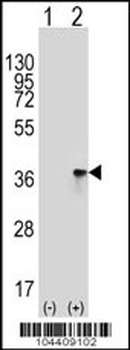
Western blot analysis of TOLLIP (arrow) using rabbit polyclonal TOLLIP Antibody (A236). 293 cell lysates (2 ug/lane) either nontransfected (Lane 1) or transiently transfected (Lane 2) with the TOLLIP gene.
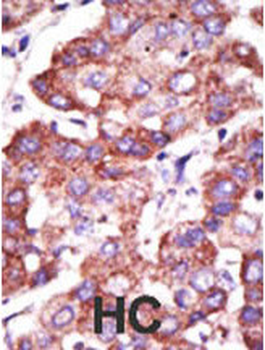
Formalin-fixed and paraffin-embedded human cancer tissue reacted with the primary antibody, which was peroxidase-conjugated to the secondary antibody, followed by AEC staining. This data demonstrates the use of this antibody for immunohistochemistry; clinical relevance has not been evaluated. BC = breast carcinoma; HC = hepatocarcinoma.
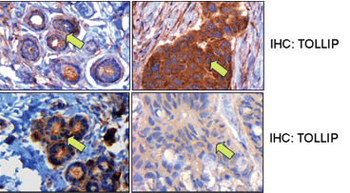
Middle panels, TOLLIP expression in matched normal and tumor breast samples. Here the TOLLIP stain in the invasive ductal carcinoma cells shows a much stronger signal compared with the normal ductal cells. Bottom panels, TOLLIP expression in matched normal and tumor breast samples. In this case, the signal for TOLLIP in the normal ductal cells is stronger than that in the invasive ductal carcinoma cells.
Quick Database Links
UniProt Details
−Documents Download
Request a Document
Protocol Information
TOLLIP Antibody (C-term) (orb1931670)
Participating in our Biorbyt product reviews program enables you to support fellow scientists by sharing your firsthand experience with our products.
Login to Submit a Review
